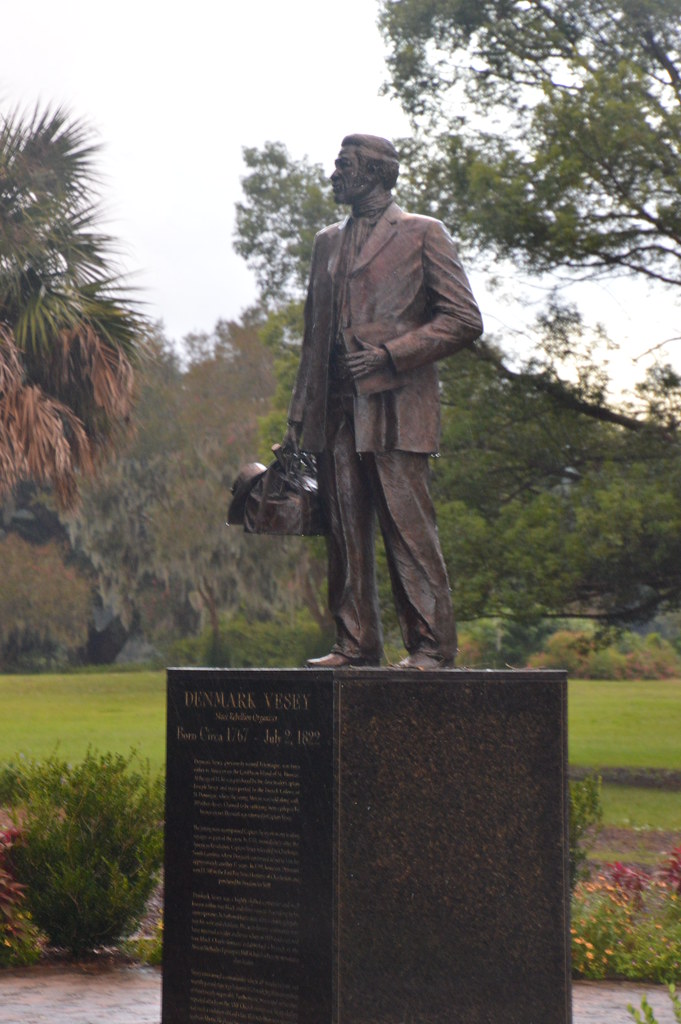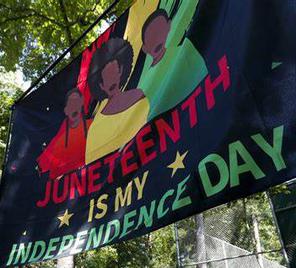Afrofuturism
Excerpts from The Vesey Republic's Theory of Elasticity
What form of government best serves those leading the republic to achieve its goals?
In developing the Vesey Estates parliamentary system NBN canvased governance models from 5th Century BC Athenian direct democracy system to Switzerland's present-day consociational democracy. We explored Nigeria's Igbo tribes' consultative assemblies from the 1300s noted for its exceptional women's involvement, and Florence, Italy's 14th-century Civic Humanist Signoria councils.
Both Grenada's People's Revolutionary Government (1979 -1983) and Burkina Faso's, National Council of Government's (1983 -1987) four-year reigns dramatically improved their citizen's living conditions and civic participation. Why then were their leaders Maurice Bishop and Thomas Sankara both assassinated in office? These nationalist anti-imperialist revolutions contain rich lessons concerning national construction and the pitfalls of one-party states.
Most critical to developing the Vesey Estates Parliament design was the Provisional Government of the Republic of New Afrika's 1990 presidential-republic constitution. Called the Code of Umoja, it was the only modern prototype of a Black republic government structure in the U.S. In August 2020, the NBN critiqued the constitution's logic and governmental architecture.
The Estates Parliament Organizational Structure
In its early days, the republic will likely encounter existential security challenges, sabotage, and dramatic political realignments on its borders threatening crib death to the newborn polity. Therefore, Vesey's governance structure--even in its provisional stage--must be thoughtfully crafted and responsive to contingency.
The Vesey's Estate's Parliament adopts a dynamic, streamlined, multi-party parliamentary system that combines the legislative and executive functions in a unicameral body. It dispenses with the concept of an upper house and lower house. To guard against distempers and emotions that from time-to-time adversely infect well intentioned legislation, an appointed Council of Sages will be seated to dispassionately evaluate the merits of policy proposals.
Vesey's High Court of Justice will function as a separate branch of government. While many parliamentary systems do not have written constitutions enumerating limitations on government and the rights of its citizens, the Vesey Republic will have a constitution and a Declaration of Citizens Rights. For that reason, Vesey's governmental structure will have an independent high court that engages in judicial review.
The merging of the legislative and executive branches in a unicameral body will enable the parliament to take quick, more unified, and decisive action embodying a singular national will.
The First Prime Minister is the executive leader of the Vesey Estates Parliament and head of government. The First Prime Minister is the head of the majority party, the head of state (the republic), and commander and chief of the nation's armed forces. Unlike the U.S. presidential system, the First Prime Minister is not directly elected by the voters. Rather, the First Prime Minister is elected by a simple majority of the parliament's majority party or by a coalition of parties achieving a simple majority of the aggregate members of parliament's (MPs) votes.
Vesey's Estates Parliament was conceived as a government of energy, taking timely and decisive action. It foregoes the entanglements of Montesquieu's arcane checks and balances system restraining the legislative, executive, and judicial branches from jousting to be the playground bully shaking down the middling and lessor Commons for their lunch money.
The dysfunction of American Empire's bi-cameral legislatures is further exacerbated when elections give control to one party controlling the Senate and the other party controlling the House of Representatives. More often than not, the president's agenda displeases his own party as much as the opposition.
Even when one party controls both legislative houses and the Oval Office, numerous checks allow legislation to be vetoed or held up from being passed by measures like the filibuster. America's presidential system is a case study of gridlock, corruption, and political malfeasance, that could not survive its first 70 years before lurching into civil war. The Vesey Republic chooses not to walk in the footsteps of a failed system.
The Vesey's System's Federal Structure
The Vesey Republic's federal structure will consist of the national Estate's Parliament government, an independent judiciary, a women's autonomous regional government, and local elected governments. In the event that more than one Vesey national polity exists in different parts of North America, establishing a confederation will be looked upon favorably.
New Black Nationalists anticipate that newly created, Black-led nation-states, independent city-states or autonomous regions will be relatively small in territory and population. Vesey Republic polities will in almost every instance begin as unitary states, with the exception of a women's-led autonomous regional government.
The proposed Vesey Estates Parliament model combining legislative and executive functions can be easily scaled to effectively govern city-states, autonomous regions, and micro-nation-state environments.
Consonant with its goal of creating the first modern non-heteropatriarchal nation, one-fourth of the territory and population will be designated as a women's-majority autonomous region. The region will consist of 25% of the republic's total landmass and population, and a guaranteed minimum of 75% of its region's electorate will be registered women voters.
Except for a limited number of areas like national defense and international relations, Vesey's women's autonomous region will draft their own table of laws provided they don't contravene Vesey's Declaration of Citizens Rights. The region will exercise control over their own judicial systems, schools, hospitals, transportation, local governments, and regional elections systems. The women's led autonomous region will also be entitled to one-fourth of the seats in the national parliament.
Multi-Party and Direct Democracy
The Estates Parliament will consist of as many political parties as the republic's diverse population and interests' groups seek to form. As a majority Black-led multi-racial nation with diverse political interests, multi-party democracy will ensure diverse viewpoints will contend for influence, votes, and support of their parties' views. All Vesey citizens, including those registering as independents must feel they have a platform and stake in the nation's development.
The Black Commons experience in Caribbean and African liberation and independence movements have mostly been single party-political states. Tragically, after Nelson Mandela retired as South Africa's president in 1999, the African National Congress has been awash in a sea of corruption and delinquent management of the country. Aborted national liberation movements are scattered across the globe, mostly because of the failure of their political programs, but also because they could not design effective government models that served their people.
Frantz Fanon in Wretched of the Earth scotched one-party rule in newly independent African countries in 1960 as a cancer on the Black Commons body. He has proven to be correct. The Estates Parliament gives smaller parties a voice, votes, and coalition building power. Having alternative solutions to political challenges is important as is everyone contributing to the national project.
That said, the tendency of parties to promote faction is a real danger. Parties promoting a slate of issues as the one and only way to solve multiple issues tend not to compromise and seriously consider the viewpoints of others. Zero-sum political party politics is a problem that can start to be addressed by ranked choice voting but the issue will require a larger open ideological struggle. No party has a monopoly on the truth or solutions.
Further, to ensure that the broadest number of Vesey citizens are shaping the nation's future, the constitution will provide guarantees that national and regional referendum and initiatives will be held. These votes will be called on critical questions and any amendments of the constitution.
To counter drift or malfeasance in the government's leadership, Vesey's sitting parliament is empowered to call a "vote of no confidence," to initiate a process for the possible removal of the government's majority coalition in snap elections. The republic's citizens won't be forced to endure non-responsive or incompetent government by waiting until the next scheduled national election to make change. Vesey will not function according to expiration dates on milk cartons, but the people's needs.
Succession, the Peaceful Transfer of Power, and a Declaration of Rights
Above all Vesey's governing structure will have clearly defined laws for the orderly succession of executive, legislative, and judiciary leadership. A framework for political succession is paramount to establish the legitimacy of the Vesey Republic's republican ideal. Vesey will not be a refuge of last resort for scoundrels and despots like the United States. the January 6 Capitol Coup perpetrators attempting to overthrow the government by allowing them to walk the streets, seek re-election to public office, and engage in nefarious coup plotting will not be tolerated.
The Vesey Republic's Theory of Elasticity restores the republic's historic role as a bulwark against the despotism of monarchy and oligarchy. It also rejects liberalism's primacy of the autonomous individual as the raison d'être of government.
Creating a Black-led nation and polities in the 2020s will be an experience in firstness for the Black Commons after having been something else for centuries. It is therefore imperative that Vesey's citizens understand their constitutionally guaranteed rights which cannot be revoked by the Estates Parliament nor First Prime Minister. All Vesey citizens will be afforded the protections enumerated in the Declaration of Citizens' Rights.
Legislative
Vesey Government
Legislative
Executive
Judiciary
Defense
Bill of Rights
Bill or Rights
The Vesey Republic's Government Structure
lllll
Vesey Republic Home
House of Commons
The High Court
of Justice
Council of Sages
- Members of the Concord are elected to three- year terms.
- The Chamber of Commons [COC] is a unicameral legislature. There is no upper or house. The COC assumes all the duties and responsibilities of the Senate in the presidential constitutional system.
- Chambers members may be subject to recall with a fixed number of petitions by registered citizens in their districts.
- The Council of Sages is an advisory body of 13 members, that serves at the pleasure of the Chamber of Commons. The Council of Sages Chairperson is appointed by the First Prime Minister with no requirement to be approved by an body of the Estates Parliament.
As a group of public policy advisors, the COS's charge is to provide critical non-partisan evaluations of legislative proposals, initiatives, and referenda.
- The First Minister is elected by a simple majority of the largest party or coalition of parties forming a majority of the Commons.
- The First Minister as the head of government does not have a term or term limits. She/He may serve as long as his party and governing coalition maintains the confidence of a simple majority in the Chamber of Commons.
- The First Minister can be voted out of office at any time if a "Motion of No Confidence" is passed by a simple majority of the Chamber of Commons.
Calling a motion of no confidence is one of two ways that an early general election can be triggered.
Another way to trigger an early general election requires at least two thirds of Commons to support a motion calling for an early general election.
The vote of no confidence is formally brought about through a motion in parliament stating, “This Chamber has no confidence in Government.” The motion is debated and then voted on. If a majority of Commons vote in favor of the motion, the government will be dissolved in a time period specified by the constiution.
Passage of the motion would not automatically trigger a general election.
If the government is brought down by the vote, there will be a designated period of time to form a new government, based on the existing make-up of MPs.
The House of Commons would then vote on whether or not they now had confidence in the new government. Were the motion to fail, a general election would be triggered.
- The High Court of Justice is a co-equal branch of the federal government.
The odd number of Justices serving on the HCJ shall be determined by the Vesey Republic Constitution.
The HCJ shall have the powers of judicial review to rule on the constitutionality of legislation and measures enacted by Vesey Estates Parliament, and the Women's Autonomous Region.
- The High Court of Justice shall the supreme court of the Vesey Republic's justice system and may hear appeals from the lower courts.
- The High Court of
Justices will be nominated by the First Prime Minister and approved by a simple majority vote of the Chamber of Commons.
- The High Court of Justices shall serve a term of nine years and cannot serve more than two consecutive terms. The terms shall be rotated every three years.
- The principle of direct democracy is that all citizens take part in decision-making.
- There are three instruments of direct democracy: mandatory and popular referenda and initiatives.
Citizens can launch a popular initiative to demand a change to the constitution.
A vote must be held on any amendment to the constitution resulting in a mandatory referendum.
A majority of 60% of eligible Vesey Republic citizens and the Women's Autonomous Province must support final passage of an amendment to the Vesey Republic's constitution.
Any Vesey Republic citizen who is eligible to vote can sign a popular initiative. The number of citizens required to launch their own popular initiative and the number of valid signatures to be collected in favor of the proposal will be determined by an act of the Chamber of Commons.
Executive
Judiciary
Legislative
The Vesey Republic's Government Form & System
Hampton Park
Denmark Vesey's Statue, Charleston,S.C.
Governance Theory
The Vesey Republic
Draft Program for A Majority Black-Led Nation-State
What New Black Nationalists Believe
Declaration of Independence
Charter (Bill) of Rights
Vesey Estate Parliament
Governance Theory of Elasticity
Women's Autonomous Region
Vesey Republic Foundational Documents
Declaration of Independence
The Vesey Republic is a unilateral and unicameral form of government administered by a parliamentary republic system of government.
-- A unilateral government centralizes decision-making power in one body.
-- A unicameral system is a government with one legislative house or chamber.
-- In Vesey's parliamentary system, executive and legislative powers are fused as opposed to separate to achieve checks and balances.
The Vesey Government's Uncodified Constitution
An uncodified constitution is a type of constitution where the fundamental rules often take the form of customs, usage, precedent and a variety of statutes and legal instruments. No single document enumerates the laws, duties and powers of a nation's governing institutions like the U.S. Constitution.
The Vesey Republic's Estate Parliament can identify its own unique customs, written and unwritten legal precedents, instruments, and statutes from its experience under British colonial parliamentary systems, America's constitutional republic and African customary law and traditions as authoritative sources for its uncodified constitution. These sources may include the Vesey Republic's Declaration of Independence and its Charter of Rights enumerating the rights of its citizens and limitations of the government.
The Vesey Republic's Estate Parliament
First Prime Minister
& Cabinet
Fusion Powers
High Court of Justice
Women's Autonomous Region
@veseyrepublic
Juneteenth
2024
On Saturday June 8, 2024, the New Black Nationalist Network will release its Vesey Government Model for
a future Black nation-state.
To Read Statement >
Please come back and visit this page on June 8, 2024, for the final draft. You can also drop in at the new Vesey Republic of Letters page for commentaries and essays on creating a new Black nation-state. To contribute to the final draft please send your comments and links to:
@veseyrepulbic
Available Now
> Vesey Republic Estate Parliamentary System
> Vesey Republic of Letters
> NBN's Governance Theory of Elasticity
Coming on Juneteenth 2024
Declaration of Independence
Declaration (Bill) of Rights
Vesey Estate Parliament
Women's Autonomous Region
Juneteenth
2024
NewBlackNationalism.com
Women-Led Autonomous Region





